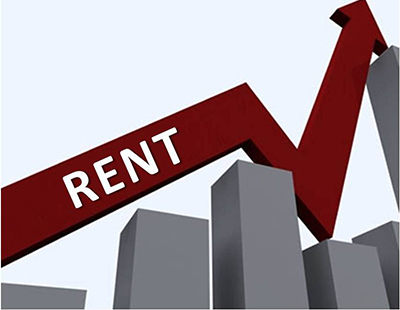The average rate of annual rental growth on a newly let property in Britain hit 12.0 per cent in August, the fastest pace since the Hamptons Lettings index began in 2014 .
This marked only the fifth month in more than a decade that annual rental growth has run at a double-digit pace, four of which occurred in the last year.
August’s rate of growth surpassed the previous record of 11.5 per cent which was set in May 2022. This growth has left new tenants paying an average of £140 per month more than they were at the same time last year.
The average British rent crossed the £1,300 pcm mark for the first-time last month, just 11 months after passing the £1,200 mark and 37 months after last passing the £1,000 pcm threshold.
This has left rents standing 29 per cent or £296 a month higher than in January 2020 - the eve of the pandemic.
Consequently, 68 per cent of the rental growth over the last decade has come in the months since the onset of Covid, with the average rent on a newly let home costing £436 a month more than in August 2013.
The agency says that however unlikely, should annual rental growth continue running at the current rate of 12.0 per cent, it would take just under four years for the average monthly rent in Great Britain to pass £2,000pcm. Yet, if rents rose at the pre-Covid (2016-19) average of 2.0 per cent, it would take 29 years.
Over the last 12 months, annual rental growth continues to be led by the capital, with London rents up 17.1 per cent year-on-year.
This is only slightly less than the 17.2 per cent record which was set back in April. Over the last year annual growth has been stronger in the capital than elsewhere as rents fell more during the pandemic and continue to catch up.
Consequently, rents in London have been rising at a double-digit pace in 16 of the last 18 months, costing the average tenant an extra £5,508 each year compared to March 2022. Since January 2020, growth has been led by Outer London where rents stand 30 per cent higher than pre-Covid levels, compared to a 17 per cent increase in Inner London.
Aneisha Beveridge, Head of Research at Hamptons, says: “Each passing month has ushered in a new rental market record. Rents have risen more in the last 12 months than they did between 2015 and 2019.
“While the current pace of rental growth is unsustainable long term, many mortgaged landlords are being squeezed just as tightly as tenants. Higher rents are only going some way towards helping mortgaged landlords’ balance their books, rather than boosting their profit. This is one of the reasons we haven’t seen large numbers of new landlord’s come into the market.
“The fallout from higher mortgage rates continues to buffer the rental market. Higher interest rates have encouraged some leveraged landlords to conserve cash and invest beyond bricks and mortar.
“With the Bank of England raising rates to encourage debt repayment instead of additional borrowing, the 30,000+ fall in the number of outstanding UK buy-to-let mortgages since November shows landlords are playing ball. However, it’s a mixed blessing for tenants. With most mortgages repaid by the sale of the home, renters are being short-changed. And this is adding fuel to the rental market.”















%20-%20IMAGE%20Client%20Accounting%20%E2%80%93%20what%20are%20your%20options.jpg)





Join the conversation
Jump to latest comment and add your reply
Who could have foreseen this? Everyone except the government, Polly Bleat, Shelter and Generation Thick.
Please login to comment